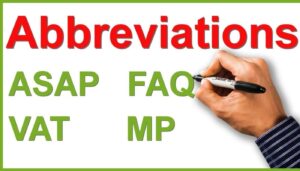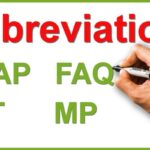In our fast-paced world, we often seek ways to simplify communication, and one common area where this happens is in how we refer to schools. Abbreviating school names or terms is not only practical but can also save us time and effort.
Whether you’re a student, teacher, or parent, understanding the proper abbreviations for schools can be incredibly helpful. It can make your communication more concise and, when used appropriately, convey respect and understanding. In this article, we’ll explore the various abbreviations used for schools, why they matter, and how to incorporate them into your daily interactions.
The Power of Abbreviations in Education
Abbreviations are a natural part of language, helping us condense lengthy words or phrases into manageable, quicker-to-say versions. When it comes to schools, abbreviations can vary from the commonly recognized acronyms of well-known institutions to more localized or specialized terms.
These shortcuts save space, make written communication more efficient, and often serve as a form of familiar shorthand that signifies belonging or status within a community.
Whether you’re a student drafting an email to a teacher, a parent filling out a school form, or an educator communicating with colleagues, knowing the right abbreviations is essential. In this article, we will dive into various types of abbreviations related to schools, offering practical examples for each, so you can better navigate the educational landscape.
1. Common School Abbreviations You Should Know
There are several widely recognized abbreviations related to schools that you will encounter frequently. These abbreviations often make their way into day-to-day conversations, emails, forms, and even school signage.
1.1 High School (HS)
The most common abbreviation for high school is HS, short for “High School.” For example:
- “I’m a senior at HS this year.”
- “The HS basketball game starts at 7 p.m.”
This abbreviation is widely used and easily understood across various contexts.
1.2 Middle School (MS)
“Middle School” is often shortened to MS. This term is typically used for students between elementary and high school levels, generally ranging from grades 6 to 8.
- “My son just started at MS last week.”
- “The MS field trip was a great success!”
1.3 Elementary School (ES)
For younger children in grades K-5, ES stands for “Elementary School.” This is another widely recognized abbreviation in educational circles.
- “My daughter is in 3rd grade at ES.”
- “The ES choir performance was incredible!”
1.4 Junior High School (JHS)
While some regions use MS for middle school, others use JHS for junior high school, which typically refers to grades 7 through 9.
- “I went to JHS in my hometown.”
- “The JHS football team has been practicing hard this season.”
2. Abbreviations for Specific Schools and Institutions
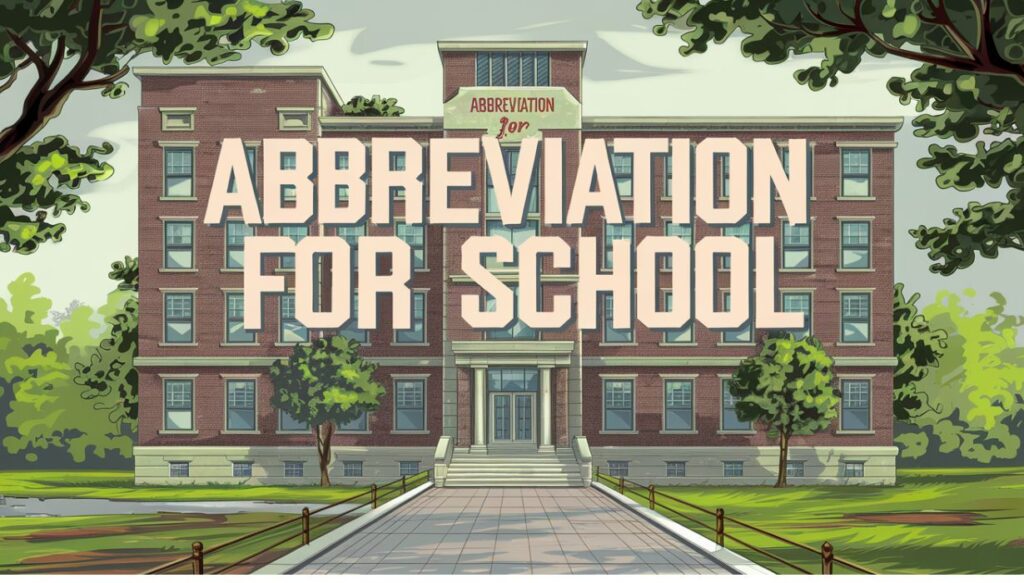
Beyond the general abbreviations like HS, MS, and ES, there are also abbreviations for specific schools, colleges, and institutions. These are commonly used when referring to prestigious or well-known establishments.
2.1 Ivy League Schools
The Ivy League refers to a group of eight prestigious universities in the northeastern United States. These schools are often abbreviated by their initials.
- Harvard University: HU
- Yale University: YU
- Princeton University: PU
- Columbia University: CU
- University of Pennsylvania: UPenn
For example:
- “I applied to UPenn for graduate school.”
- “He graduated from CU last year.”
These abbreviations are particularly common in the world of higher education, and they help streamline discussions about these top-tier schools.
2.2 Community College (CC)
Community colleges are institutions that provide affordable education, typically for two-year degrees or vocational training. CC is the standard abbreviation for these institutions.
- “She’s attending CC to complete her associate’s degree.”
- “The CC offers several evening courses.”
Using CC makes it easier to discuss community colleges without repeating the full name.
2.3 Charter School (CS)
Charter schools are public schools that operate independently of the local school district and are typically founded by teachers, parents, or other groups. These schools often use the abbreviation CS.
- “My nephew goes to CS down the street.”
- “The new CS has an excellent reputation.”
Charter schools are growing in number and popularity, and this abbreviation is helpful for discussions involving these alternative educational institutions.
3. Abbreviations for Academic Programs and Degrees
In addition to abbreviations for schools themselves, there are also numerous abbreviations for academic programs, degrees, and qualifications. These terms are useful when you need to specify what level or type of education someone is receiving or has completed.
3.1 Associate Degree (AA or AS)
When referring to an associate degree, two common abbreviations are AA (Associate of Arts) or AS (Associate of Science), depending on the field of study.
- “She just earned her AA in Psychology.”
- “He’s working towards an AS in Biology.”
These degrees are typically awarded after two years of college or community college education.
3.2 Bachelor’s Degree (BA, BS)
The abbreviations for bachelor’s degrees are commonly BA (Bachelor of Arts) or BS (Bachelor of Science), again depending on the field.
- “I’m finishing my BA in English this semester.”
- “He earned his BS in Computer Science.”
These degrees typically require four years of study and are the first level of higher education beyond high school.
3.3 Master’s Degree (MA, MS)
A MA (Master of Arts) or MS (Master of Science) refers to a graduate degree typically earned after completing a bachelor’s degree.
- “She’s pursuing her MA in History.”
- “He’s enrolled in the MS program for Engineering.”
Master’s degrees usually take one to two years to complete, focusing on advanced knowledge and specialization in a given field.
3.4 Doctorate (PhD, EdD)
A PhD (Doctor of Philosophy) or EdD (Doctor of Education) represents the highest level of academic achievement in many fields.
- “He received his PhD in Physics from MIT.”
- “She’s finishing her EdD in Educational Leadership.”
These advanced degrees require several years of study and research, culminating in a dissertation or thesis.
4. Abbreviations for School-Related Activities and Terms
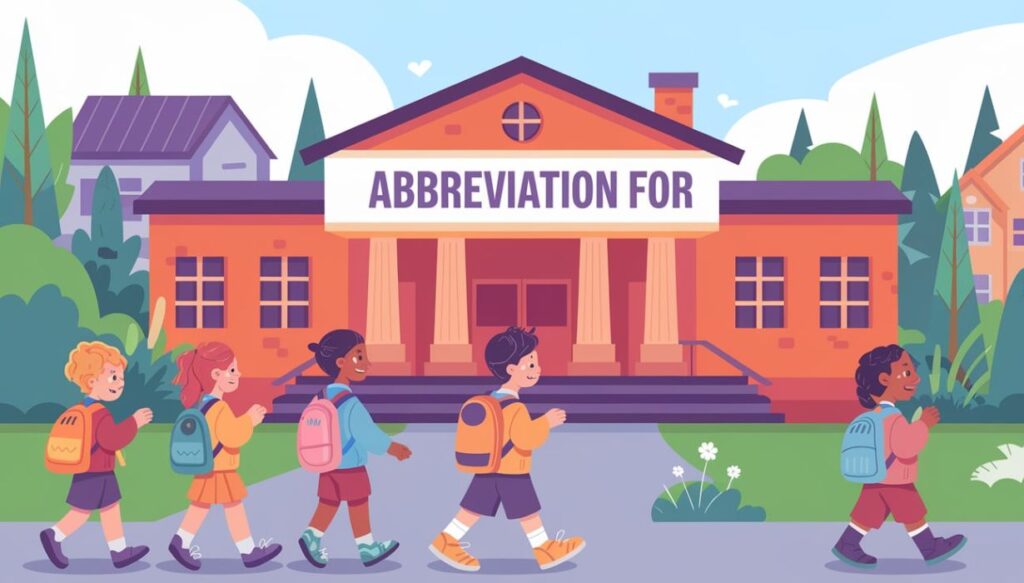
In addition to abbreviating the names of schools and degrees, there are also a number of abbreviations that pertain to school activities, subjects, and common terms used in education.
4.1 Parent-Teacher Association (PTA)
The PTA is an organization that brings parents and teachers together to support students and improve educational quality.
- “The next PTA meeting is on Thursday evening.”
- “She’s volunteering with the PTA this year.”
Being familiar with this abbreviation helps parents and educators communicate effectively about school events and involvement.
4.2 Advanced Placement (AP)
Many high schools offer AP courses (Advanced Placement) that provide college-level curricula to students.
- “She’s taking AP Calculus this year.”
- “The AP exam is next week.”
Students often use AP as shorthand when discussing these challenging and high-level courses.
4.3 Grade Point Average (GPA)
Your GPA is an important measure of your academic performance, and the abbreviation is commonly used in both high school and college contexts.
- “He has a GPA of 3.8.”
- “The school requires a minimum GPA of 2.5 for graduation.”
This abbreviation is crucial for students who are applying for scholarships, college admissions, or jobs after graduation.
4.4 Special Education (SPED)
Special Education, abbreviated SPED, refers to educational services designed to meet the needs of students with disabilities.
- “She’s in the SPED program for reading assistance.”
- “The SPED teacher is incredible.”
5. Helpful Tips for Using Abbreviations in Education
While abbreviations are helpful for saving time and space, it’s important to use them thoughtfully. Here are some tips to help you navigate the use of abbreviations in educational settings:
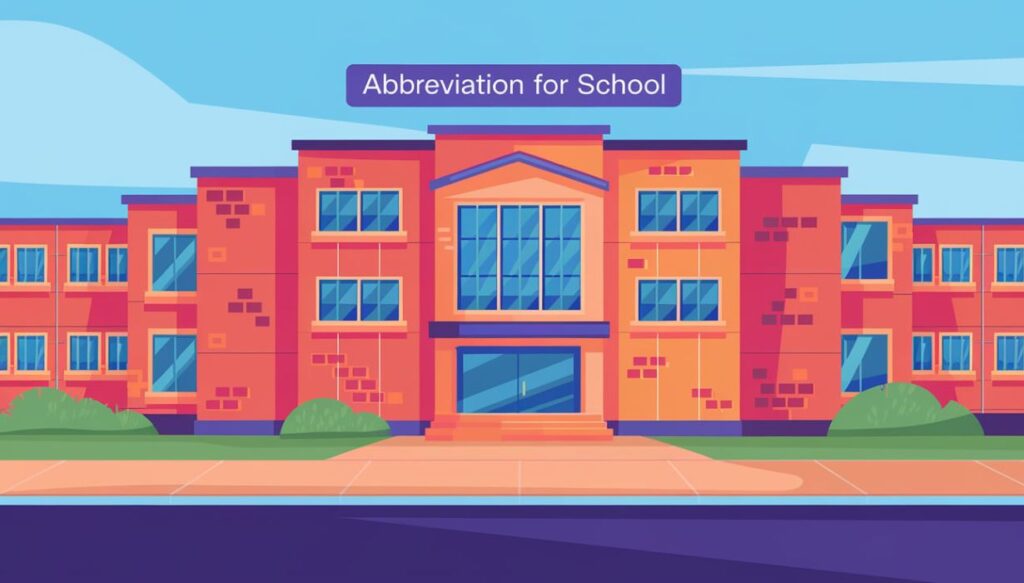
- Know your audience: Not everyone may be familiar with the abbreviation you’re using. If you’re unsure, it’s better to spell things out, especially in formal communications or when speaking to someone unfamiliar with the terms.
- Use abbreviations sparingly: In professional emails or academic writing, overuse of abbreviations can make your communication feel cluttered or overly informal. Balance is key.
- Be context-aware: Some abbreviations may have different meanings in different contexts (e.g., MS could refer to “Middle School” or “Multiple Sclerosis”), so always consider the context to avoid confusion.
- Respect the full name: Abbreviations are convenient, but always remember to use the full name when it’s necessary, especially in formal situations or when addressing someone who may not be familiar with the abbreviation.
Final Words:
Understanding and using school-related abbreviations effectively can enhance communication and make interactions more efficient. Whether you’re navigating the education system as a student, parent, or educator, these abbreviations will help you engage in conversations and correspondence more confidently and clearly.
Just remember to be mindful of the context and audience, and use these shortcuts when they make sense. By doing so, you’ll ensure your communication is both effective and respectful of the various stakeholders involved in the educational journey.
In summary, abbreviations like HS, MS, ES, and others are essential tools that help simplify our conversations about education. By understanding when and how to use them, you can make your educational discussions more fluid, efficient, and well-informed.



